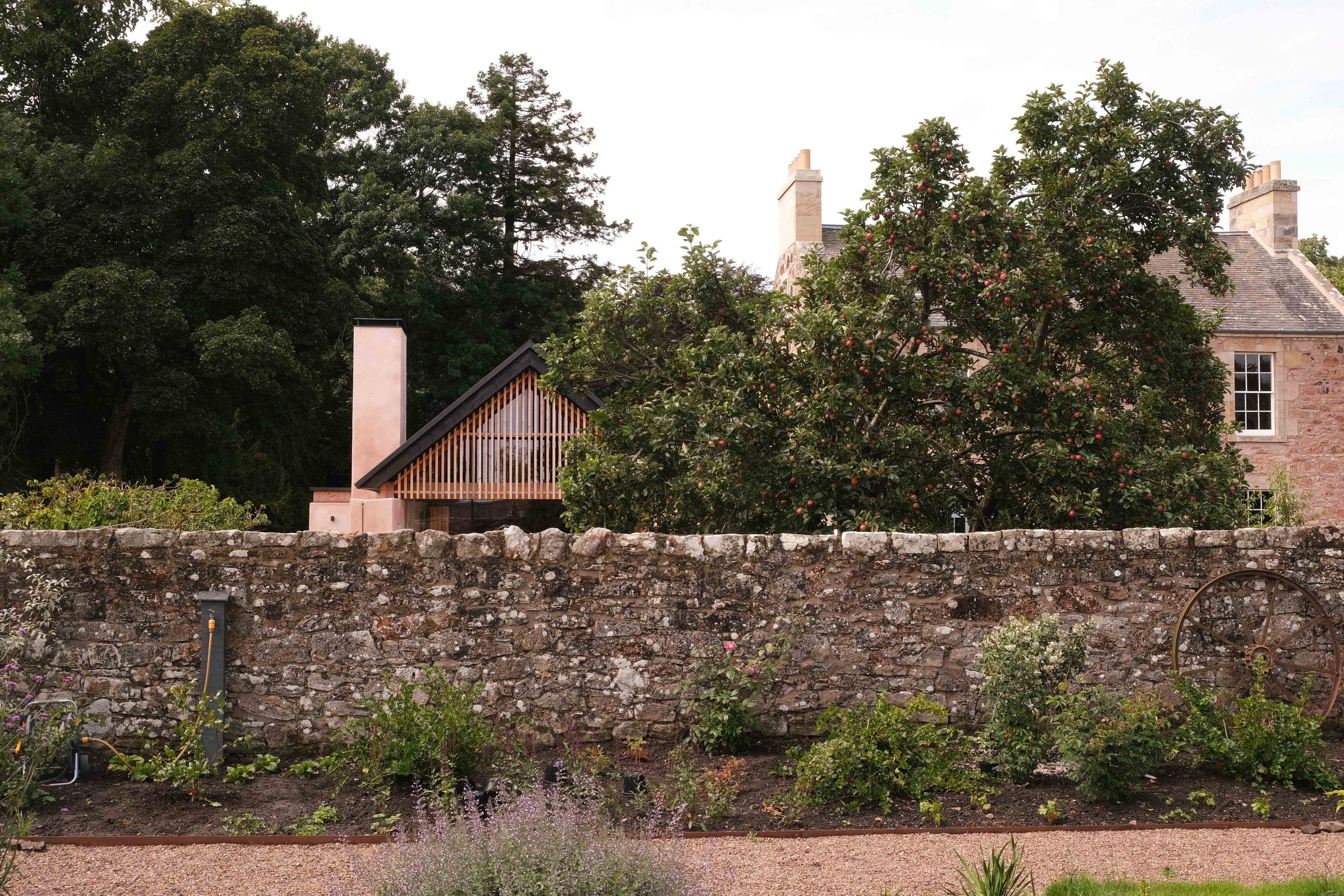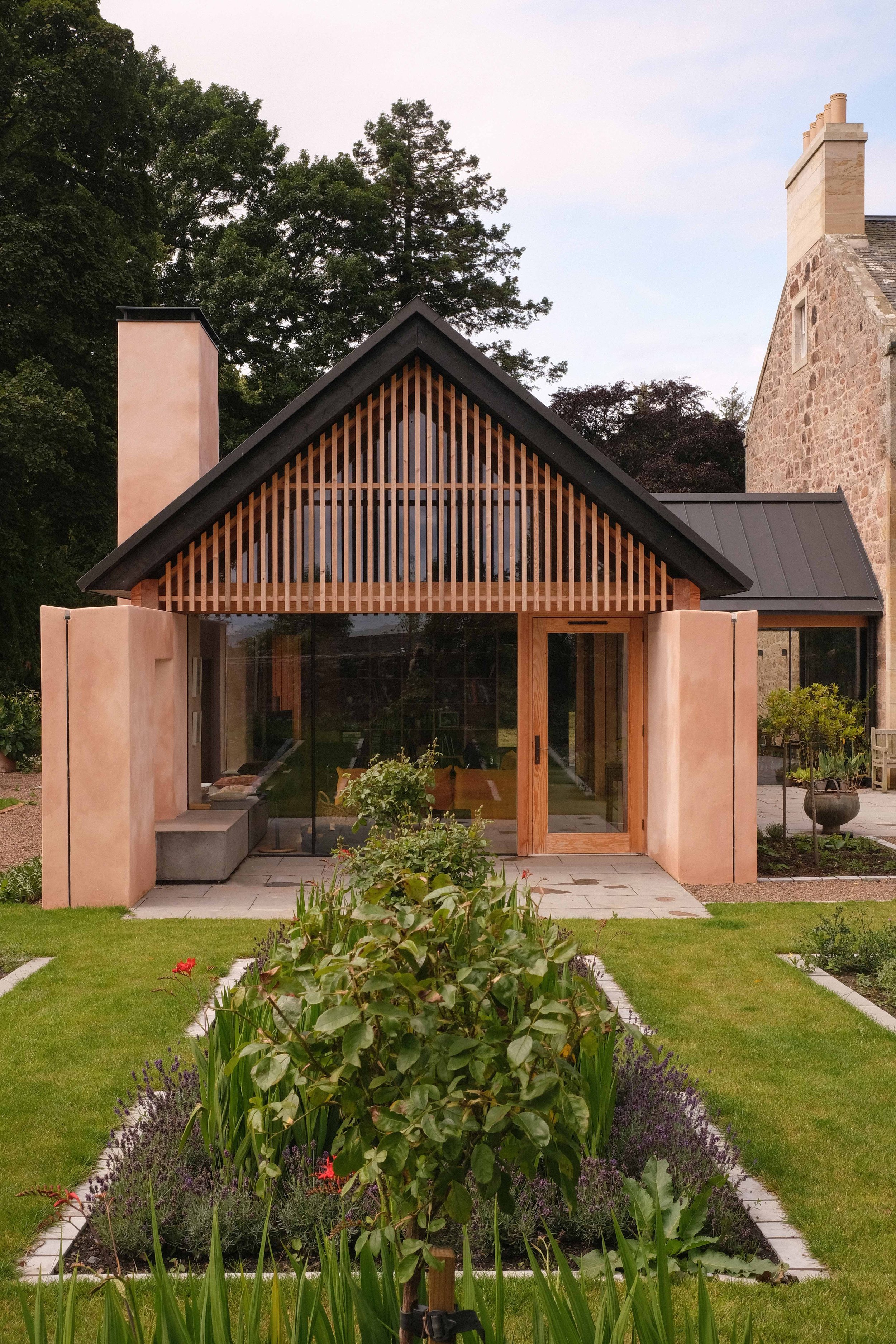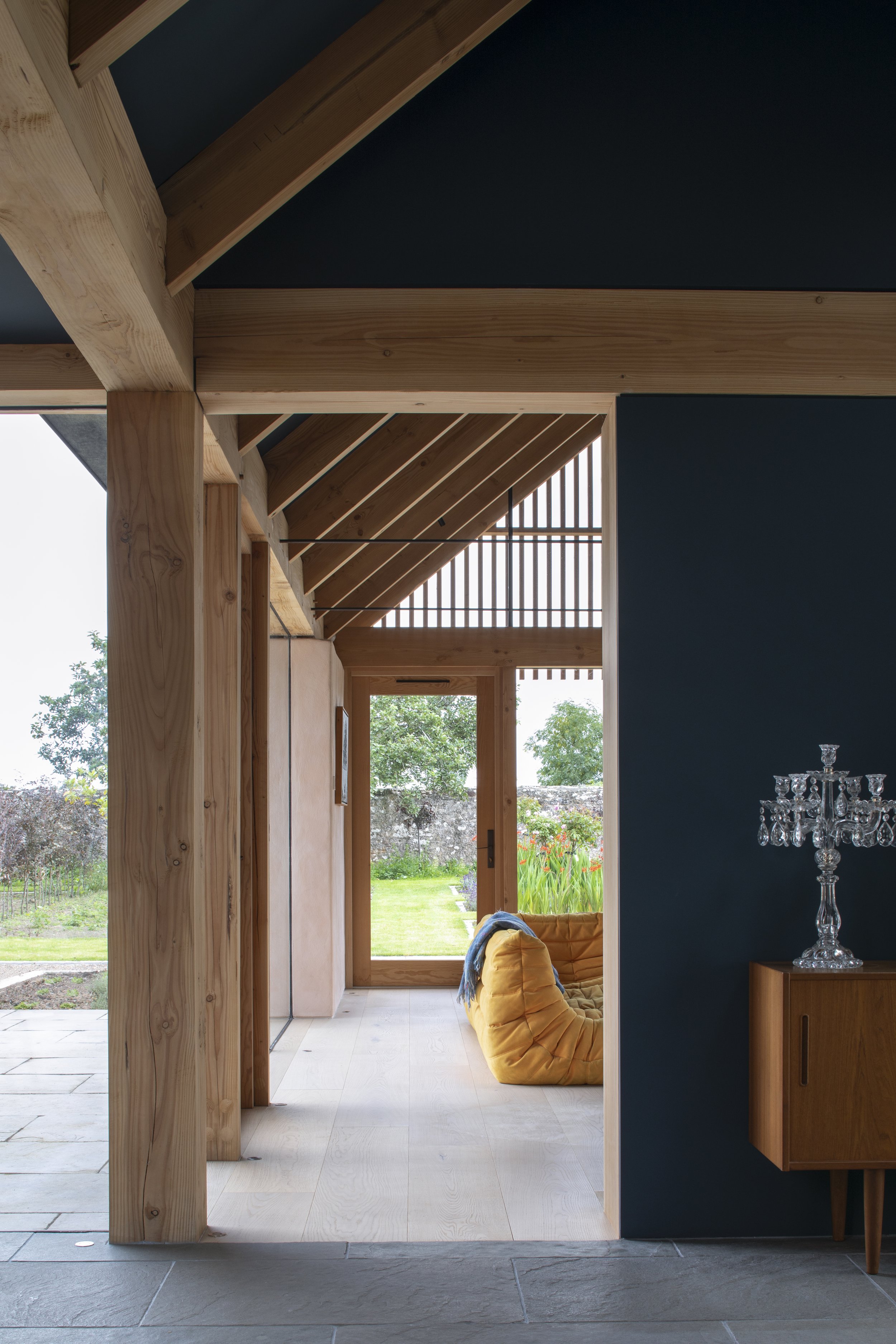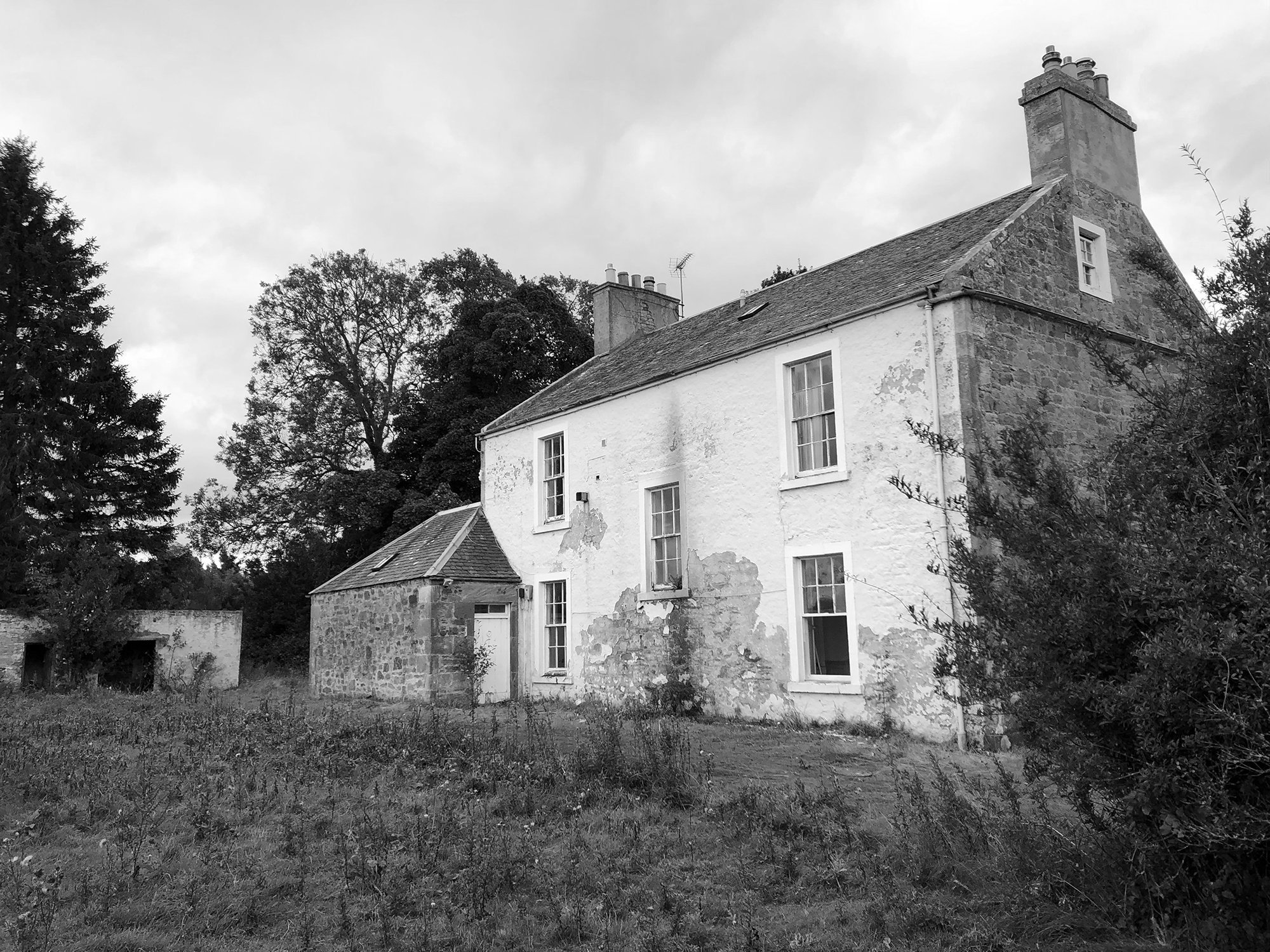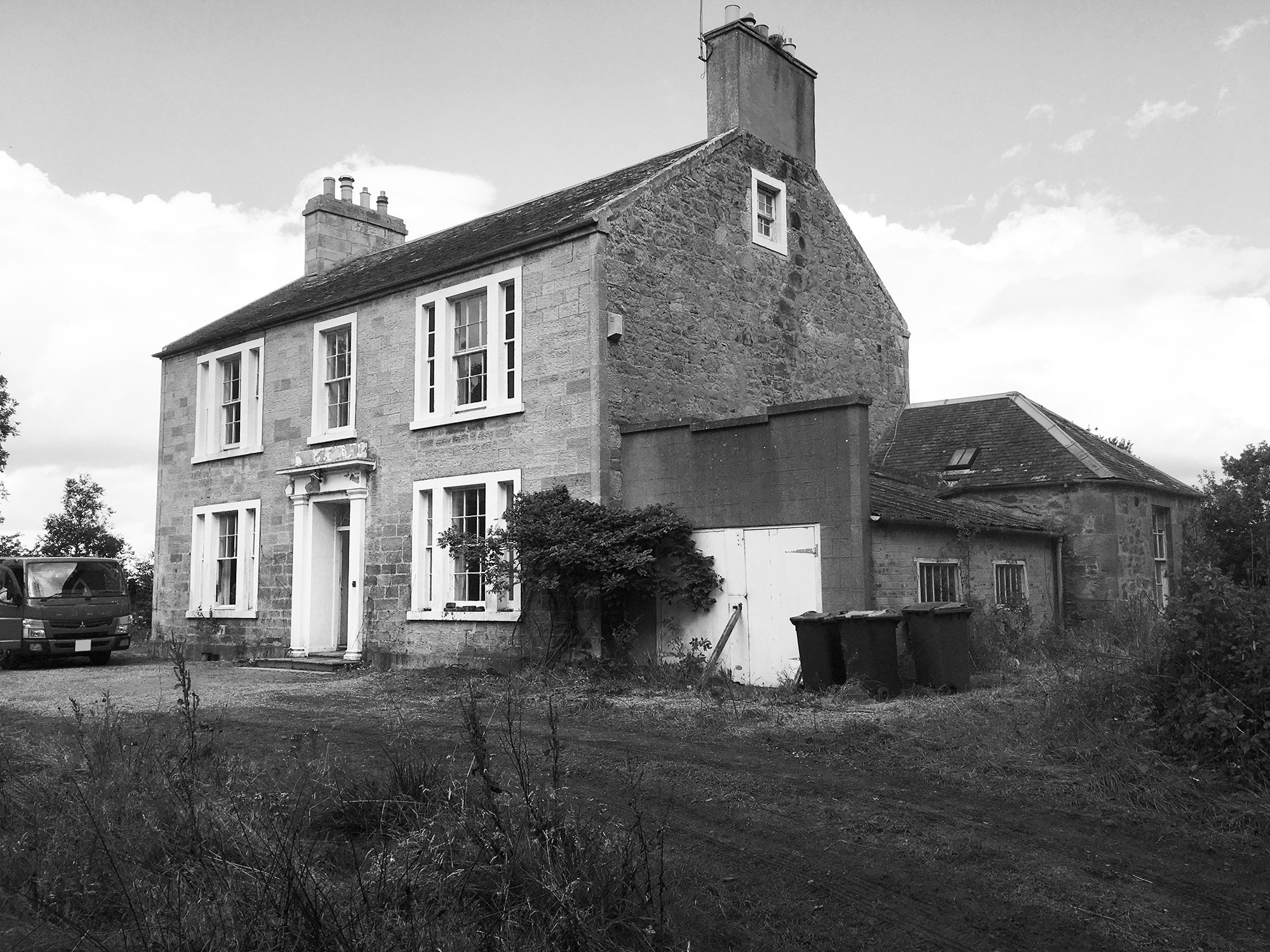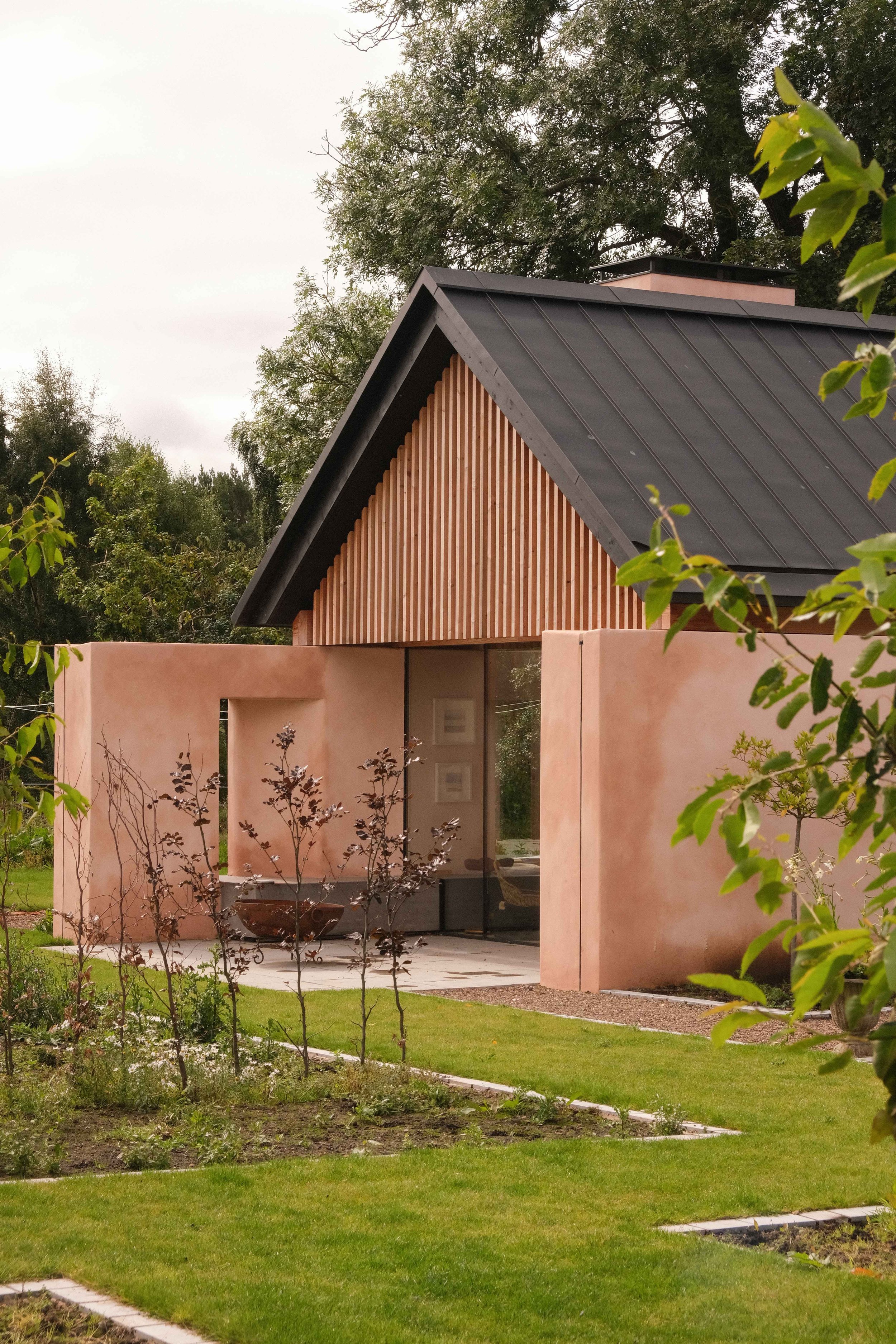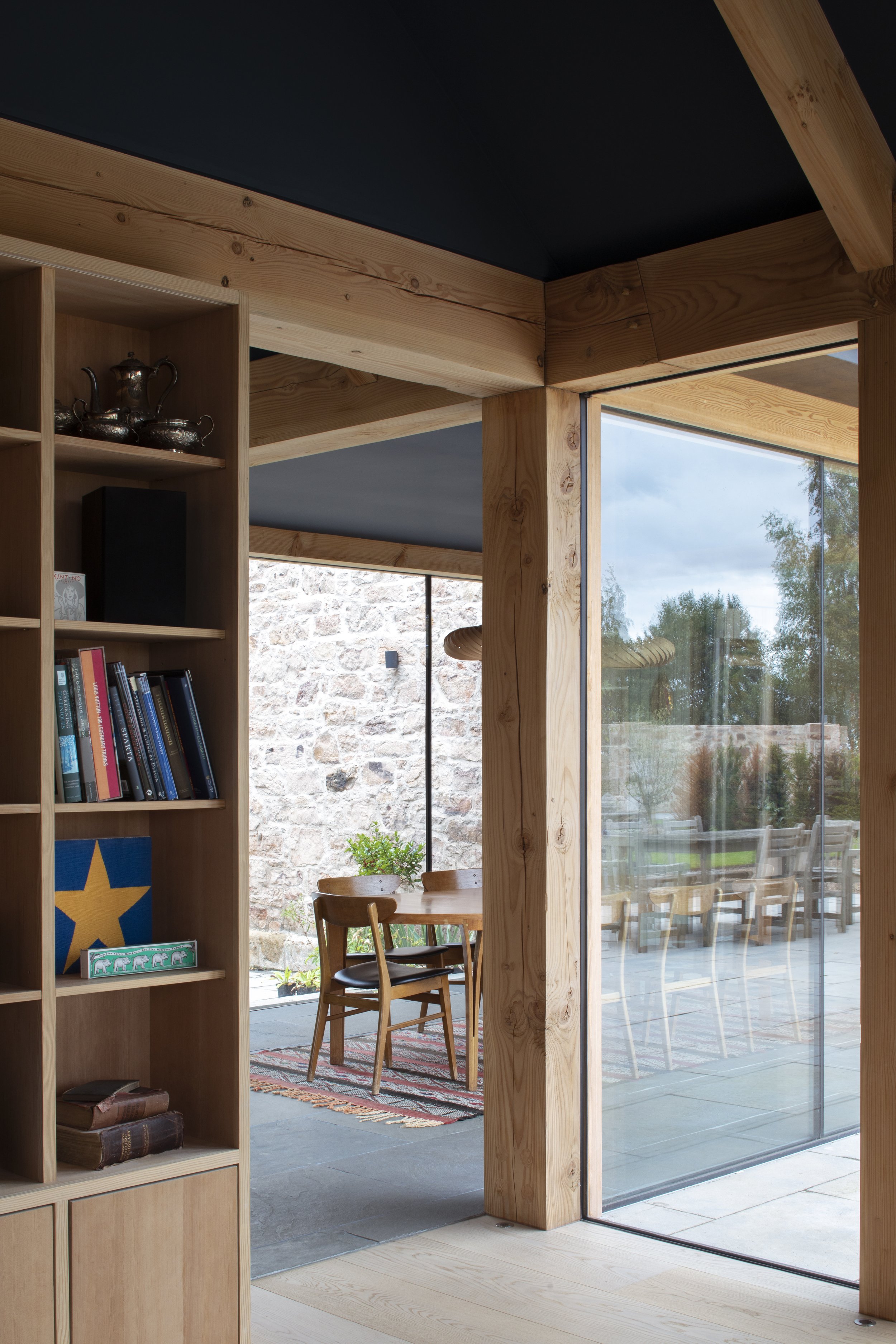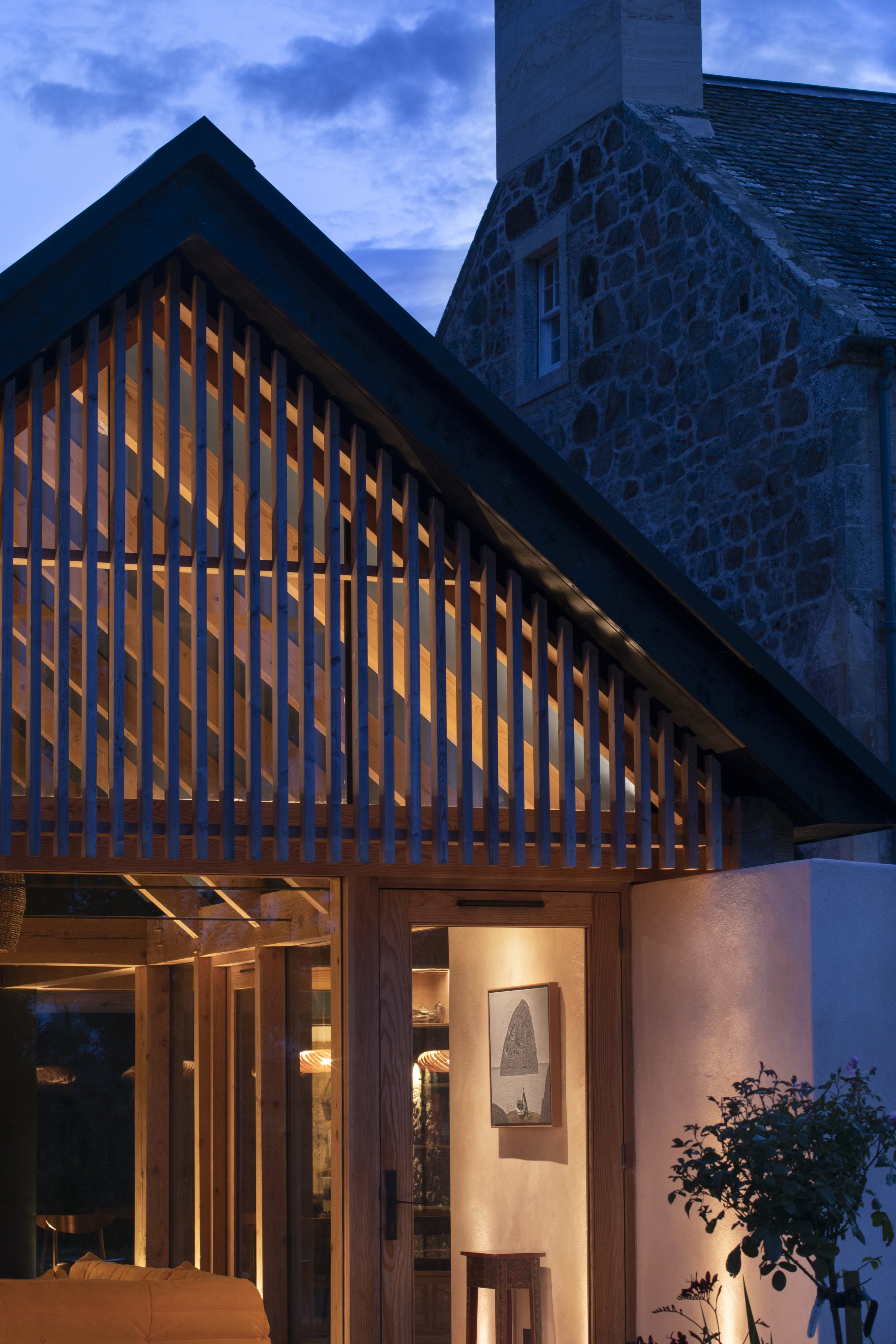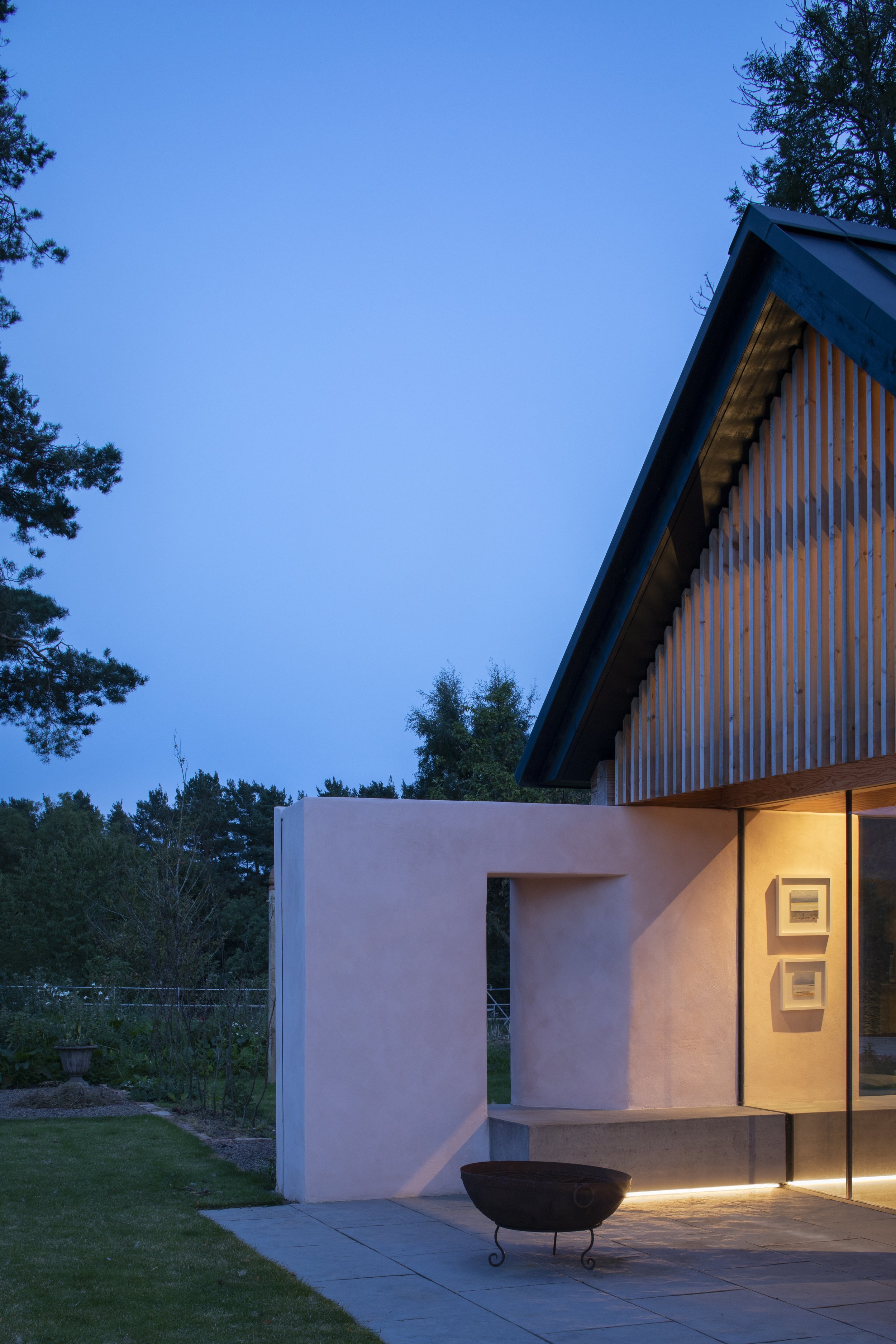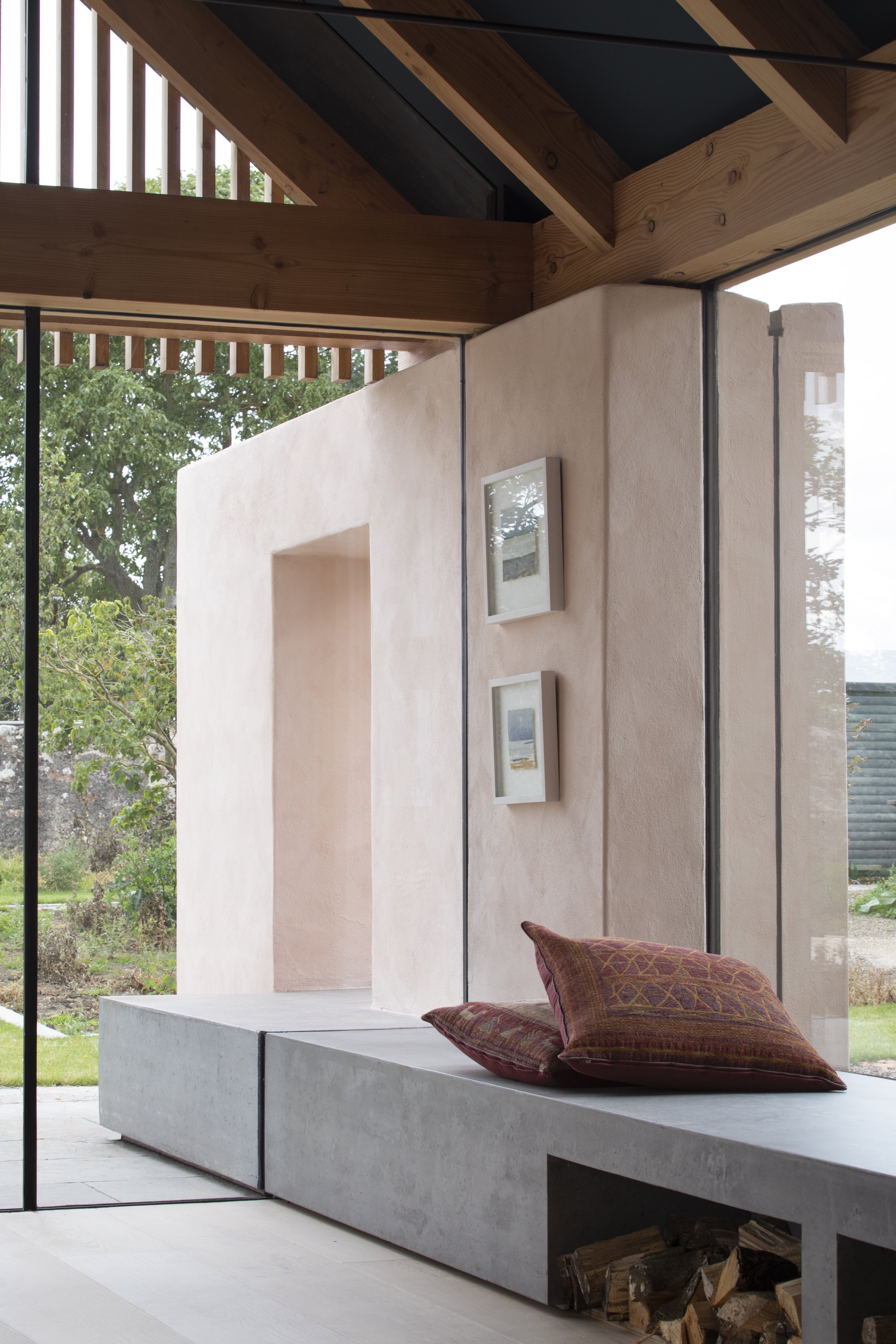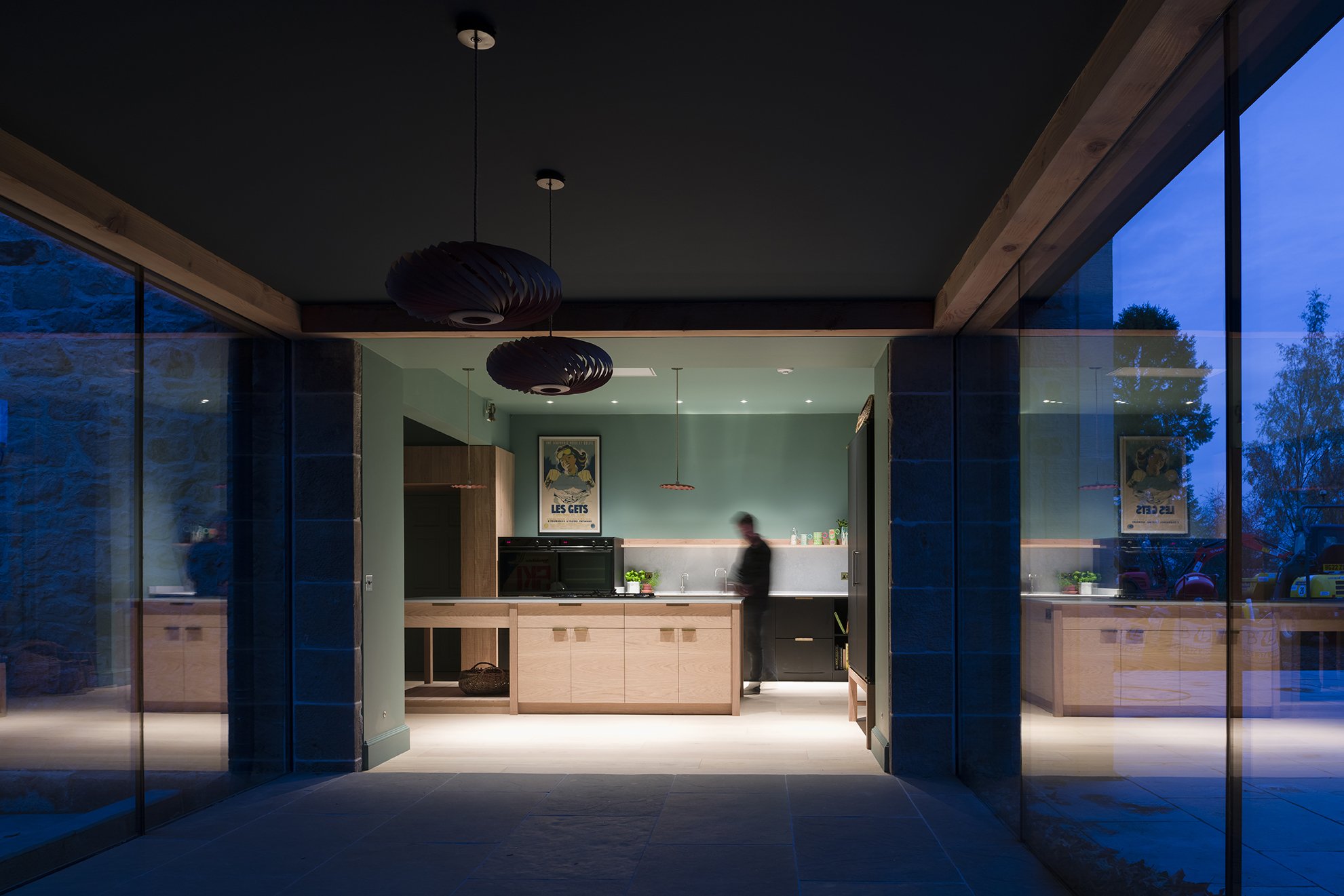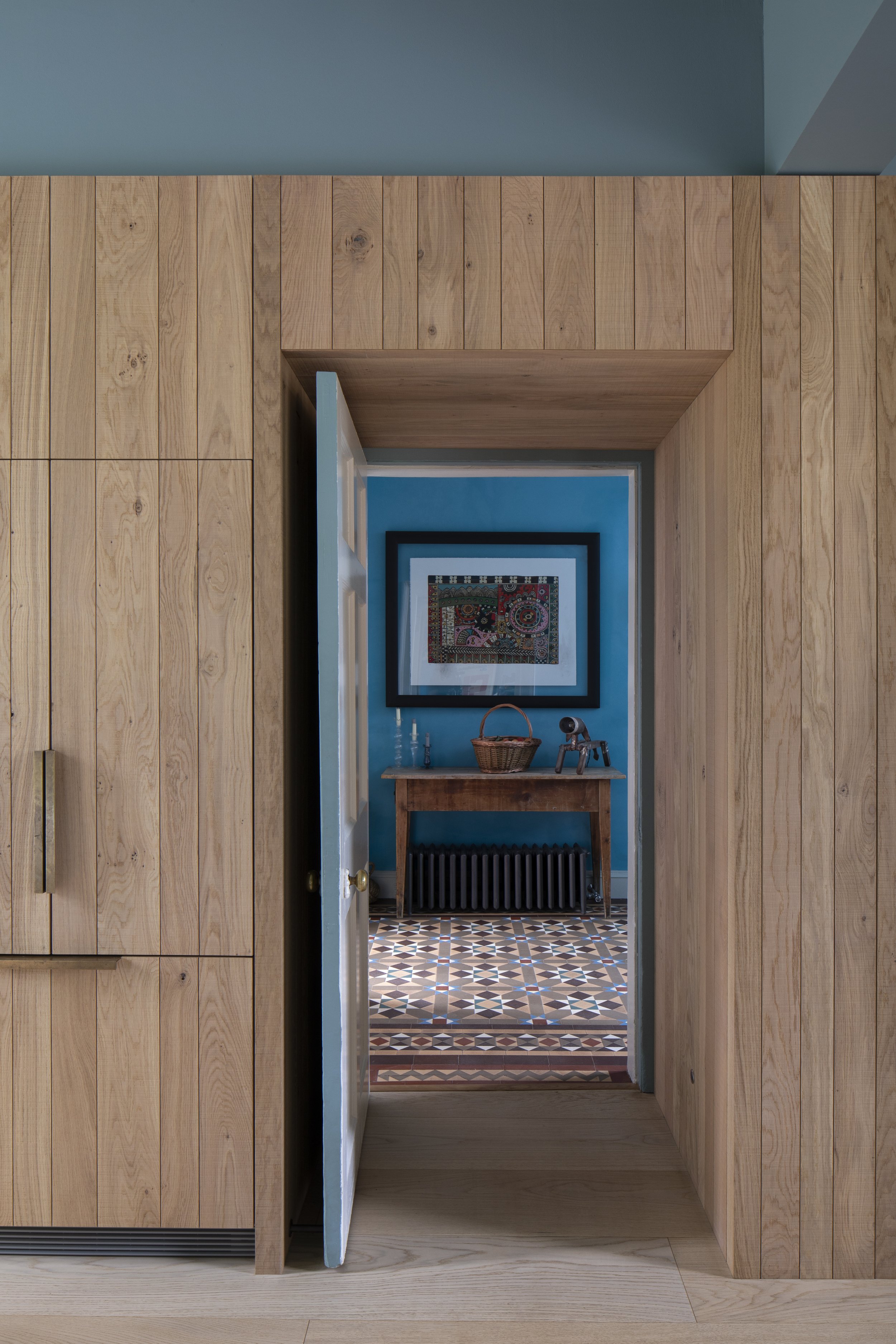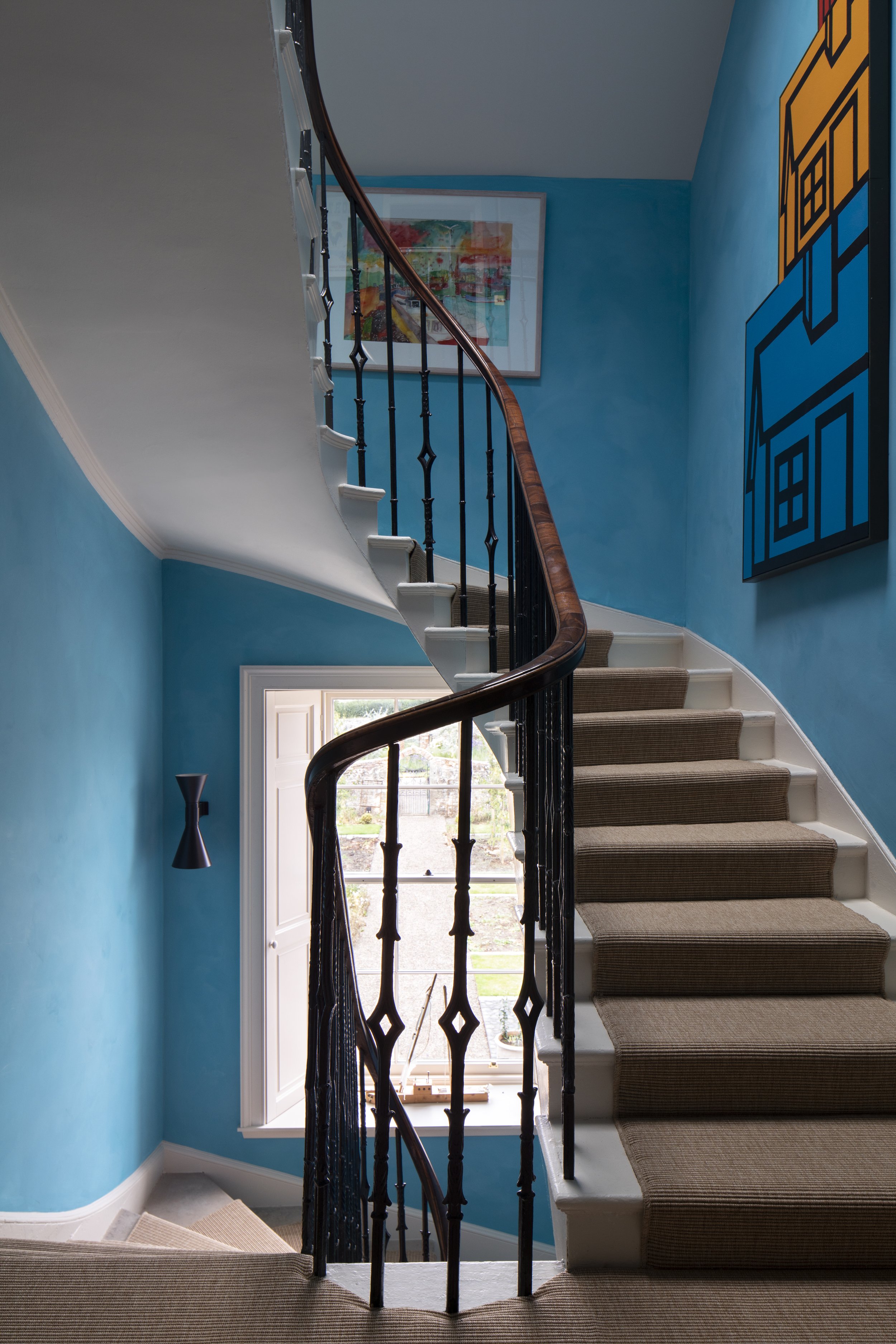Our project at Renton Hall rescues a 200-year old country manor that had been vacant and neglected for 10 years, along with its substantial walled garden which had been untended for a century. The B-listed Georgian house was aggrandised in the early 19th century by the wealthy owner of the associated Rentonhall Tile Works (since demolished) and occupies an isolated, elevated position in the East Lothian countryside.
Our client’s brief was to provide expanded living and utilitarian spaces alongside a comprehensive restoration of the original manor to extend its life as a permanent home. Our spatial approach focused on creating a generous set of social spaces that embrace a feeling of living in the landscape, with an open and welcoming kitchen as the social heart of the home.
The scheme involved the removal of dilapidated later single-storey structures surrounding the southern gable of the manor which had greater capacity for change. A new wing of living, dining and service spaces is offset from the existing south gable to form a new courtyard, with a primary axis perpendicular to the Georgian house. At the south-western end of the extension, a discreet new rear hall is conveniently combined with accessible new sanitary, utility, storage and plant spaces which were impossible to sensitively incorporate into the original manor. The historic manor plan is largely unchanged, save for an intervention to connect the southern ground floor rooms to form the new kitchen.
Improving the visual and physical connections with a restored landscape around the house was of paramount importance. The existing Georgian building emphasised visual and physical connections with the front gardens, but sadly had poor connections with the rear gardens. The extension draws out new living spaces into the eastern garden areas, capturing sunlight and views, reaching out towards the walled garden and creating a conversational relationship with the existing building. The interventions provided an architectural backdrop and framework for the client to begin the epic task of restoring the extensive derelict gardens.
The architectural expression and character of the new extension hark to vernacular topologies of ancillary stables and garden outbuildings, consciously deferential to the grand manor. The new spaces feel borrowed from the gardens, framed by a composition of massive lime-rendered masonry walls arranged in the landscape. Aside from these walls, the majority of the extension structure is hewn from sustainably-sourced British Douglas fir, which is echoed in the doors and opening windows, and complimented by external larch cladding and screens. Frameless glazing details were developed meticulously to express a lightness contrasting the mass of the new lime walls. A new roof of hand-pressed zinc sails over the extension.
Deeper retrofit measures were introduced wherever possible, particularly in the attic storey. The former oil-fired heating system is now a ASHP hybrid, as the first step of transitioning the site away from fossil fuels once the surrounding network allows. The extension incorporates breathable and low-embodied energy materials such as wood fibre insulation and lime plaster.
Awards:
EAA Residential Project- Single Dwelling Award
EAA Wood Award
Team
Client: Private
Quantity Surveyor: Macleod & Aitken
Structural Engineers : Narro Associates
Landscape Design: Fiona Budden Garden Design
Contractor: William McNae & Son
Structural timber framing: Carpenter Oak
Photographs : Dapple Photography Leigh Simpson


